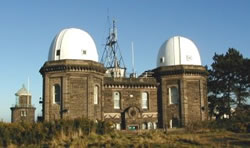|
General Bathymetric Chart Of The Oceans
The General Bathymetric Chart of the Oceans (GEBCO) is a publicly available bathymetric chart of the world's oceans. The project was conceived with the aim of preparing a global series of charts showing the general shape of the seafloor. Over the years it has become a reference map of the bathymetry of the world’s oceans for scientists and others. Organisation GEBCO operates under the joint auspices of the International Hydrographic Organization (IHO). and the Intergovernmental Oceanographic Commission (IOC) of UNESCO. Its work is done by an international group of experts in seafloor mapping who develop a range of bathymetric data sets and data products. Data sets and products Although originally GEBCO published paper contour charts, today it has moved into the digital age and collects digital depths of the ocean from wherever they are available. GEBCO provides a range of bathymetric data sets and data products, including: *Global gridded bathymetric data sets: **GEBCO_08 G ... [...More Info...] [...Related Items...] OR: [Wikipedia] [Google] [Baidu] |
Bathymetric Chart
A bathymetric chart is a type of isarithmic map that depicts the submerged topography and physiographic features of ocean and sea bottoms. Their primary purpose is to provide detailed depth contours of ocean topography as well as provide the size, shape and distribution of underwater features. Topographic maps display elevation above ground and are complementary to bathymetric charts. Charts use a series of lines and points at equal intervals to showcase depth or elevation. A closed shape with increasingly smaller shapes inside of it can indicate an ocean trench or a seamount, or underwater mountain, depending on whether the depths increase or decrease going inward.Bathymetric surveys and charts are associated with the science of oceanography, particularly marine geology, and underwater engineering or other specialized purposes. Bathymetric data used to produce charts can also be converted to bathymetric profiles which are vertical sections through a feature. History Ancient Eg ... [...More Info...] [...Related Items...] OR: [Wikipedia] [Google] [Baidu] |
Geographer
A geographer is a physical scientist, social scientist or humanist whose area of study is geography, the study of Earth's natural environment and human society, including how society and nature interacts. The Greek prefix "geo" means "earth" and the Greek suffix, "graphy," meaning "description," so a geographer is someone who studies the earth. The word "geography" is a Middle French word that is believed to have been first used in 1540. Although geographers are historically known as people who make maps, map making is actually the field of study of cartography, a subset of geography. Geographers do not study only the details of the natural environment or human society, but they also study the reciprocal relationship between these two. For example, they study how the natural environment contributes to human society and how human society affects the natural environment. In particular, physical geographers study the natural environment while human geographers study human society ... [...More Info...] [...Related Items...] OR: [Wikipedia] [Google] [Baidu] |
Oceanography
Oceanography (), also known as oceanology and ocean science, is the scientific study of the oceans. It is an Earth science, which covers a wide range of topics, including ecosystem dynamics; ocean currents, waves, and geophysical fluid dynamics; plate tectonics and the geology of the sea floor; and fluxes of various chemical substances and physical properties within the ocean and across its boundaries. These diverse topics reflect multiple disciplines that oceanographers utilize to glean further knowledge of the world ocean, including astronomy, biology, chemistry, climatology, geography, geology, hydrology, meteorology and physics. Paleoceanography studies the history of the oceans in the geologic past. An oceanographer is a person who studies many matters concerned with oceans, including marine geology, physics, chemistry and biology. History Early history Humans first acquired knowledge of the waves and currents of the seas and oceans in pre-historic times. Observations ... [...More Info...] [...Related Items...] OR: [Wikipedia] [Google] [Baidu] |
British Antarctic Survey
The British Antarctic Survey (BAS) is the United Kingdom's national polar research institute. It has a dual purpose, to conduct polar science, enabling better understanding of global issues, and to provide an active presence in the Antarctic on behalf of the UK. It is part of the Natural Environment Research Council (NERC). With over 400 staff, BAS takes an active role in Antarctic affairs, operating five research stations, one ship and five aircraft in both polar regions, as well as addressing key global and regional issues. This involves joint research projects with over 40 UK universities and more than 120 national and international collaborations. Having taken shape from activities during World War II, it was known as the Falkland Islands Dependencies Survey until 1962. History Operation Tabarin was a small British expedition in 1943 to establish permanently occupied bases in the Antarctic. It was a joint undertaking by the Admiralty and the Colonial Office. At the end of t ... [...More Info...] [...Related Items...] OR: [Wikipedia] [Google] [Baidu] |
Crowdsourcing
Crowdsourcing involves a large group of dispersed participants contributing or producing goods or services—including ideas, votes, micro-tasks, and finances—for payment or as volunteers. Contemporary crowdsourcing often involves digital platforms to attract and divide work between participants to achieve a cumulative result. Crowdsourcing is not limited to online activity, however, and there are various historical examples of crowdsourcing. The word crowdsourcing is a portmanteau of "crowd" and " outsourcing". In contrast to outsourcing, crowdsourcing usually involves less specific and more public groups of participants. Advantages of using crowdsourcing include lowered costs, improved speed, improved quality, increased flexibility, and/or increased scalability of the work, as well as promoting diversity. Crowdsourcing methods include competitions, virtual labor markets, open online collaboration and data donation. Some forms of crowdsourcing, such as in "idea competiti ... [...More Info...] [...Related Items...] OR: [Wikipedia] [Google] [Baidu] |
Altimeter
An altimeter or an altitude meter is an instrument used to measure the altitude of an object above a fixed level. The measurement of altitude is called altimetry, which is related to the term bathymetry, the measurement of depth under water. The most common unit for altimeter calibration worldwide is hectopascals (hPa), except for North America (other than Canada ) and Japan where inches of mercury (inHg) are used. To obtain an accurate altitude reading in either feet or meters, the local barometric pressure must be calibrated correctly using the barometric formula. History The scientific principles behind the altimeter were first written by Alexander Bryce (minister), Rev. Alexander Bryce a Scottish minister and astronomer in 1772 who realised that the principles of a barometer could be adjusted to measure height. Pressure altimeter Altitude can be determined based on the measurement of atmospheric pressure. The greater the altitude, the lower the pressure. When a barometer is s ... [...More Info...] [...Related Items...] OR: [Wikipedia] [Google] [Baidu] |
University Of New Hampshire
The University of New Hampshire (UNH) is a public land-grant research university with its main campus in Durham, New Hampshire. It was founded and incorporated in 1866 as a land grant college in Hanover in connection with Dartmouth College, moved to Durham in 1893, and adopted its current name in 1923. The university's Durham campus comprises six colleges. A seventh college, the University of New Hampshire at Manchester, occupies the university's campus in Manchester. The University of New Hampshire School of Law is in Concord, the state's capital. The university is part of the University System of New Hampshire and is classified among "R1: Doctoral Universities – Very high research activity". , its combined campuses made UNH the largest state university system in the state of New Hampshire, with over 15,000 students. It was also the most expensive state-sponsored school in the United States for in-state students. History The Morrill Act of 1862 granted federal land ... [...More Info...] [...Related Items...] OR: [Wikipedia] [Google] [Baidu] |
Nippon Foundation
of Tokyo, Japan, is a private, non-profit grant-making organization. It was established in 1962 by Ryoichi Sasakawa. The foundation's mission is to direct Japanese motorboat racing revenue into philanthropic activities, it uses this money to pursue global maritime development and assistance for humanitarian work, both at home and abroad. In the humanitarian field, it focuses on such fields as social welfare, public health, and education. The foundation has also been criticized for promoting Japanese historical revisionism, particularly in whitewashing Japanese war crimes committed in World War II. Since 2003 the foundation has promoted sign language with the aim of allowing deaf people to fully participate in society, in this way, they created scholarships for deaf people at Gallaudet University and the National Technical Institute for the Deaf (NTID) of USA. The current chairman is Yohei Sasakawa, World Health Organization Goodwill Ambassador for Leprosy Elimination, ... [...More Info...] [...Related Items...] OR: [Wikipedia] [Google] [Baidu] |
Prince Albert I Of Monaco
Albert I (Albert Honoré Charles Grimaldi; 13 November 1848 – 26 June 1922) was Prince of Monaco from 10 September 1889 until his death. He devoted much of his life to oceanography, exploration and science. Alongside his expeditions, Albert I made reforms on political, economic and social levels, bestowing a constitution on the principality in 1911. Early life Born on 13 November 1848 in Paris, France, the son of Prince Charles III (1818–1889), and Countess Antoinette de Mérode-Westerloo (1828–1864), a Belgian noblewoman, maternal aunt of Donna Maria Vittoria dal Pozzo, Princess della Cisterna, Duchess consort of Aosta and Queen consort of Spain. As a young man, Prince Albert served in the Spanish Navy as a navigator. During the Franco-Prussian War, he joined the French Navy where he was awarded the Legion of Honor. In addition to his interest in oceanographic studies, Albert had a keen interest in the origins of man and in Paris, he founded the "''Institute for H ... [...More Info...] [...Related Items...] OR: [Wikipedia] [Google] [Baidu] |
JPEG
JPEG ( ) is a commonly used method of lossy compression for digital images, particularly for those images produced by digital photography. The degree of compression can be adjusted, allowing a selectable tradeoff between storage size and image quality. JPEG typically achieves 10:1 compression with little perceptible loss in image quality. Since its introduction in 1992, JPEG has been the most widely used image compression standard in the world, and the most widely used digital image format, with several billion JPEG images produced every day as of 2015. The term "JPEG" is an acronym for the Joint Photographic Experts Group, which created the standard in 1992. JPEG was largely responsible for the proliferation of digital images and digital photos across the Internet, and later social media. JPEG compression is used in a number of image file formats. JPEG/Exif is the most common image format used by digital cameras and other photographic image capture devices; along with JPEG ... [...More Info...] [...Related Items...] OR: [Wikipedia] [Google] [Baidu] |
Ocean
The ocean (also the sea or the world ocean) is the body of salt water that covers approximately 70.8% of the surface of Earth and contains 97% of Earth's water. An ocean can also refer to any of the large bodies of water into which the world ocean is conventionally divided."Ocean." ''Merriam-Webster.com Dictionary'', Merriam-Webster, [...More Info...] [...Related Items...] OR: [Wikipedia] [Google] [Baidu] |
British Oceanographic Data Centre
The British Oceanographic Data Centre (BODC) is a national facility for looking after and distributing data about the marine environment. BODC is the designated marine science data centre for the United Kingdom and part of the National Oceanography Centre (NOC) — primarily at its facility in Liverpool, with small number of its staff in Southampton. The centre provides a resource for science, education and industry, as well as the general public. History The origins of BODC go back to 1969 when NERC created the British Oceanographic Data Service (BODS). Located at the National Institute of Oceanography, Wormley in Surrey, its purpose was to: * Act as the UK's National Oceanographic Data Centre * Participate in the international exchange of data as part of the Intergovernmental Oceanographic Commission (IOC) network of national data centres In 1975, BODS was transferred to Bidston Observatory on the Wirral, near Liverpool, as part of the newly formed Institute of Oc ... [...More Info...] [...Related Items...] OR: [Wikipedia] [Google] [Baidu] |



.jpg)


.jpg)

